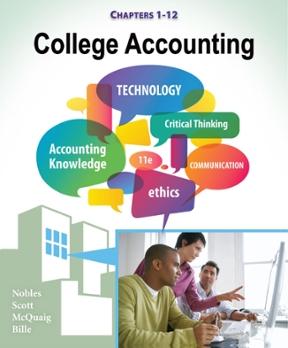Question
Please circle one and only one answer for each question (no points will be given if circling multiple answers for any question). 1. Economics is
Please circle one and only one answer for each question (no points will be given if circling multiple answers for any question).
1. Economics is the study of how
a.to fully satisfy our unlimited wants.
b.society manages its scarce resources.
c.to reduce our wants until we are satisfied.
d.to avoid having to make trade-offs.
e.society manages its unlimited resources.
2. A rational person does not act unless
a.the action makes money for the person.
b.the action is ethical.
c.the action produces marginal costs that exceed marginal benefits.
d.the action produces marginal benefits that exceed marginal costs.
e.None of the above is true.
3. Points on the production possibilities frontier are
a.efficient.
b.inefficient.
c.unattainable.
d.normative.
e.none of the above.
4. If a small percentage increase in the price of a good greatly reduces the quantity demanded for that good, the demand for that good is
a.price inelastic.
b.price elastic.
c.unit price elastic.
d.income inelastic.
e.income elastic.
5. Which of the following statements about a binding price ceiling is true?
a.The surplus created by the price ceiling is greater in the short run than in the long run.
b.The surplus created by the price ceiling is greater in the long run than in the short run.
c.The shortage created by the price ceiling is greater in the short run than in the long run.
d.The shortage created by the price ceiling is greater in the long run than in the short run.
6. Consumer surplus is the area
a.above the supply curve and below the price.
b.below the supply curve and above the price.
c.above the demand curve and below the price.
d.below the demand curve and above the price.
e.below the demand curve and above the supply curve.
7. Suppose the world price is below the before-trade domestic price for a good. If a country allows free trade in this good,
a.consumers will gain and producers will lose.
b.producers will gain and consumers will lose.
c.both producers and consumers will gain.
d.both producers and consumers will lose.
8. A public good is
a.both rival in consumption and excludable.
b.neither rival in consumption nor excludable.
c.rival in consumption but not excludable.
d.not rival in consumption but excludable.
9. Economic profit is equal to total revenue minus
a.implicit costs.
b.explicit costs.
c.the sum of implicit and explicit costs.
d.marginal costs.
e.variable costs.
10. Which of the following is not a characteristic of a competitive market?
a.There are many buyers and sellers in the market.
b.The goods offered for sale are largely the same.
c.Firms can freely enter or exit the market.
d.Firms generate small but positive economic profits in the long run.
1. Why is there a trade-off between equality and efficiency?
2. Why does a tax generally produce a deadweight loss?
3. What are the two types of public policies toward externalities? Describe them. Which one do economists prefer? Why?
4. What is a barrier to entry? What are the three sources of barriers to entry that allow a monopoly to remain the sole seller in a market?
5. What are the two types of imperfect competition? Describe them.
Step by Step Solution
There are 3 Steps involved in it
Step: 1

Get Instant Access to Expert-Tailored Solutions
See step-by-step solutions with expert insights and AI powered tools for academic success
Step: 2

Step: 3

Ace Your Homework with AI
Get the answers you need in no time with our AI-driven, step-by-step assistance
Get Started


